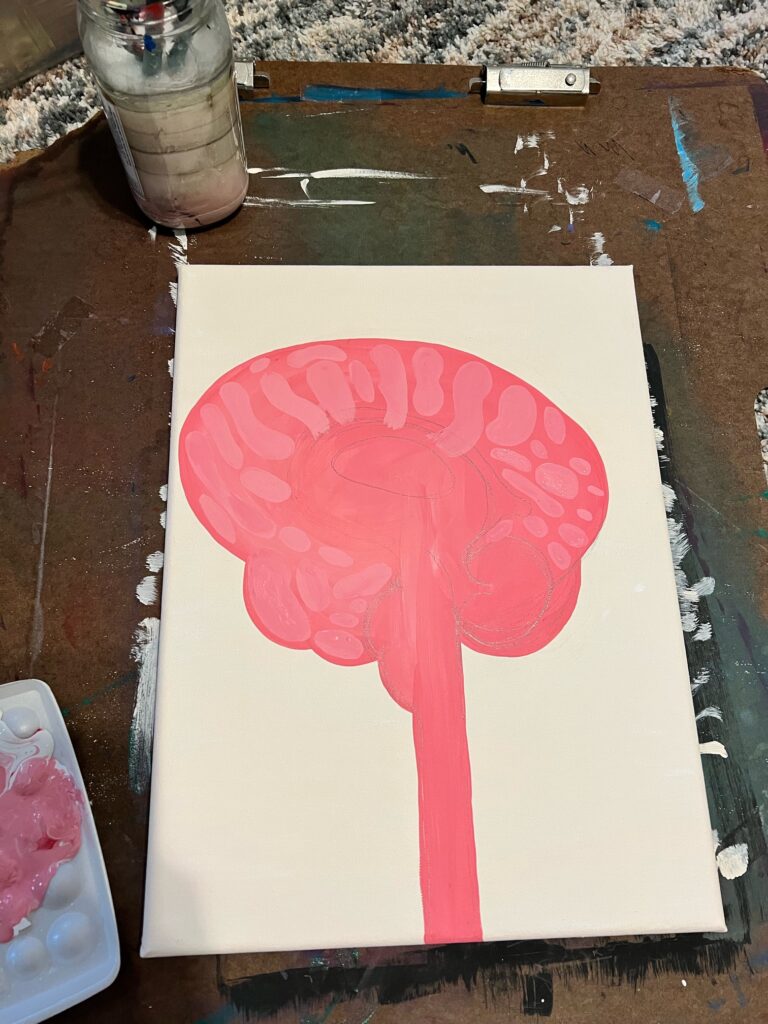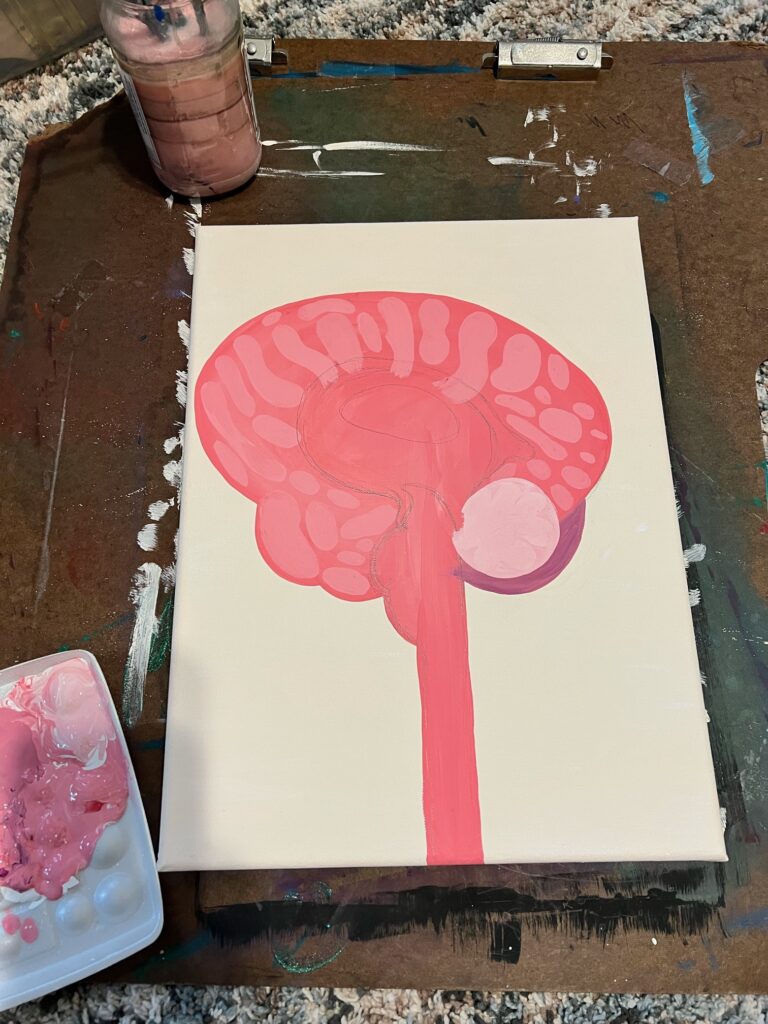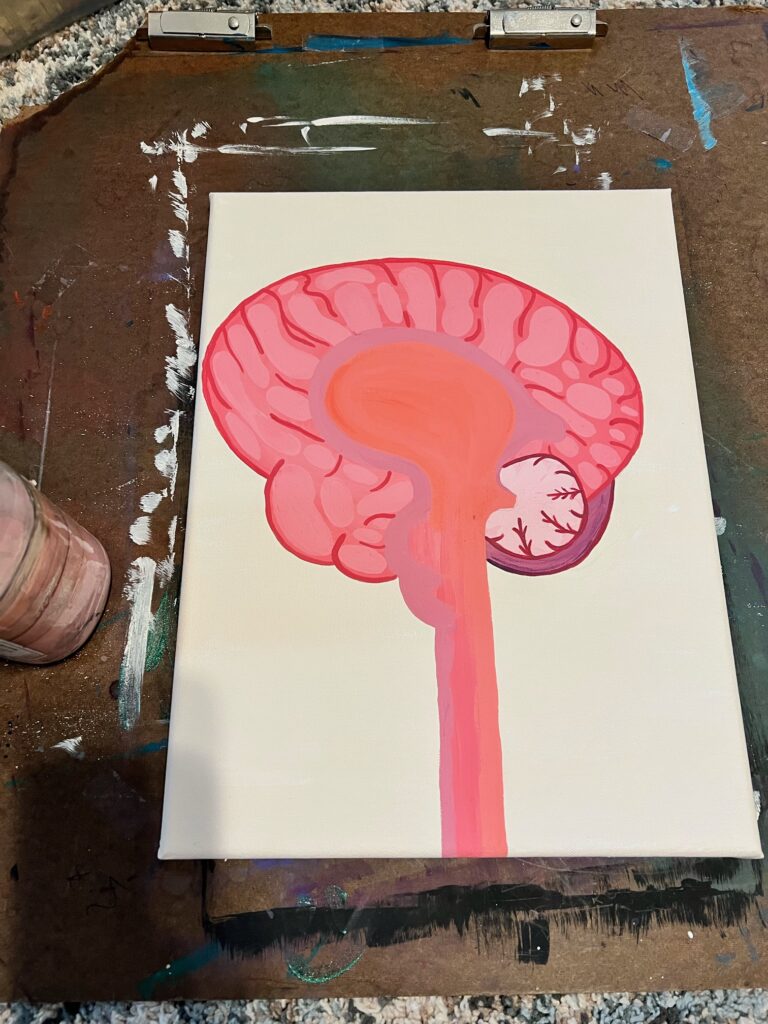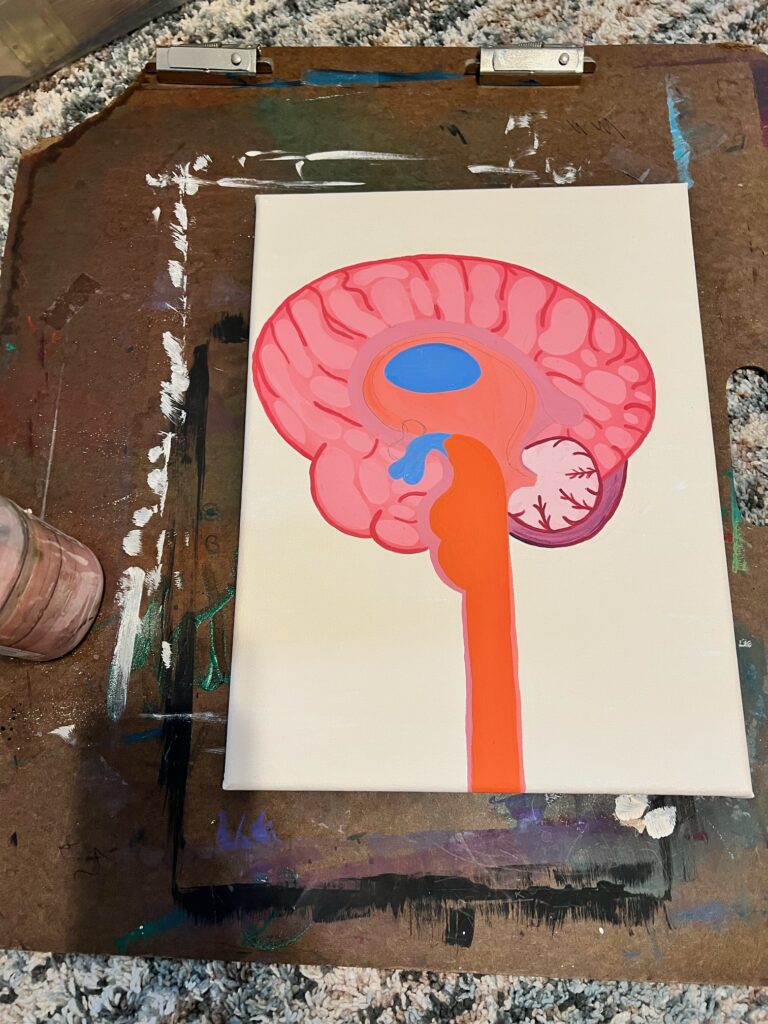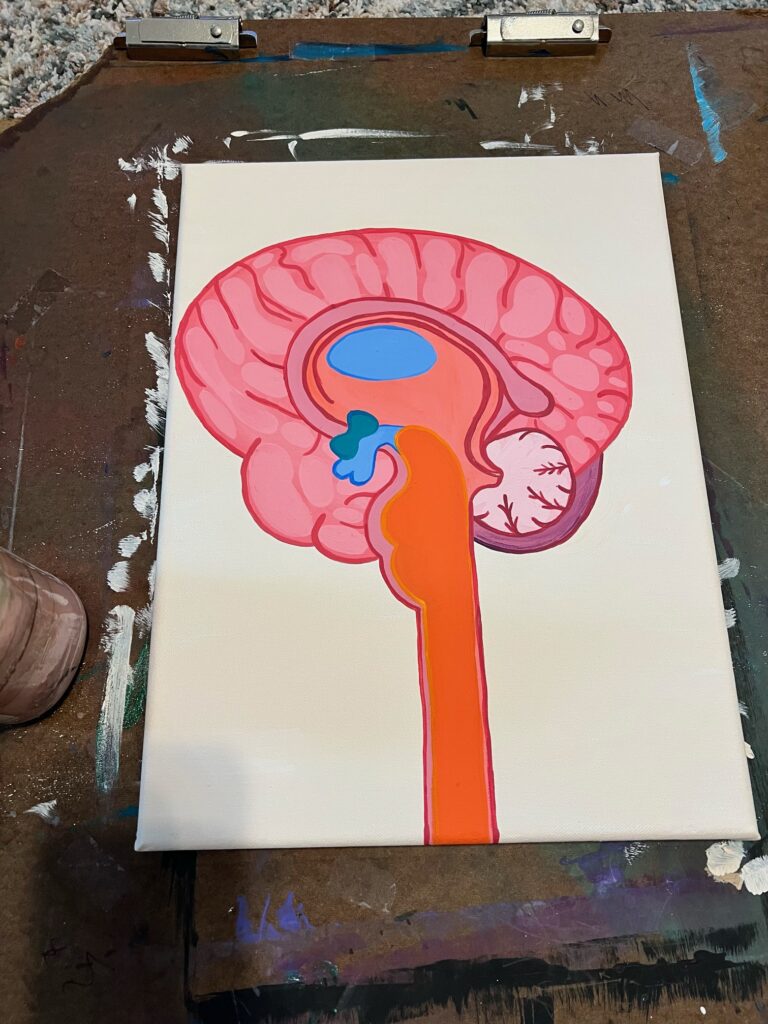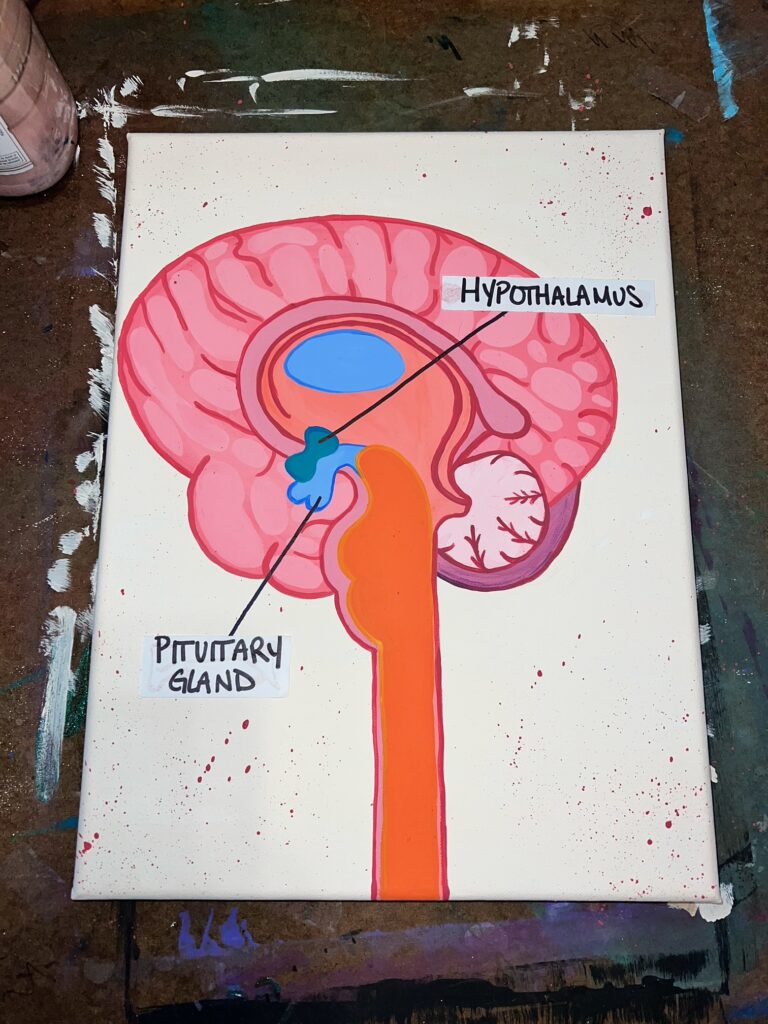For my STEAM project, I decided to further research an endocrine condition called acromegaly. You’re probably sure that you have never heard of it before, but I know we have all seen it. It can affect anyone and sad to say, people are famous because of this (can be) life threating condition. And you’re probably asking, what is this endocrine issue? And how could it affect someone this much?
Acromegaly is a very rare and hormonal disorder that creates enlarged features that can affect you in your child and adulthood. This is caused by the pituitary gland producing too much of the GH (growth hormone) in our body. During our childhood, we can see things like increased height or weight and can be considered as gigantism. But in our adulthood, we are limited to the bones that are in our features like our hands and feet. Making the most common sign of this condition is a person having these huge features. But it can affect other areas, as well as create other issues like coarse skin, enlarged facial features (forehead, lips), vision problems, deep voice, and joint issues simply because our body isn’t supposed to grow this way.
And like I mentioned before, these abnormal growth patterns occur because of our pituitary gland producing too much of GH. And you might be asking what is the pituitary gland? The pituitary gland is a small gland, almost the size of a small bean, and is connected around the bottom of our brain called the hypothalamus. This part helps regulate many functions in our body, as well as helping the pituitary secrete a list of major hormones. This then makes this a gland you can live without but only if you take medication. If you don’t, it can create life threating issues because it’s a part of our endocrine system and produces its own hormones, as well as communicating to other glands to release theirs and function correctly. This helps create the proper homeostasis that our body needs due to the two different sections where secretion happens: the anterior pituitary (frontal lobe) and the posterior pituitary (back lobe).
The posterior lobe is made up of neural tissue that stores and frees two of the main neurohormones called antidiuretic hormone (ADH) and oxytocin, which are only released into our blood when neurons fire. For example, oxytocin is released during childbirth and ADH is released during time experience pain or the “pleasure” of drugs. The anterior pituitary is made up of glandular tissue, creating and delivering peptide hormones like adrenocorticotropic hormone (ACTH), follicle- stimulating hormone (FSH), growth hormone (GH), luteinizing hormone (LH), prolactin (PRL), and thyroid- stimulating hormone (TSH). And all of these are known as tropic hormones except for GH and PRL. And there is abbreviation again, GH.
GH can be known as growth hormone, or somatotropin, because of it being produced by somatotropic cells and for being the main reason for the condition we call acromegaly. This is because this hormone has an indirect action that triggers areas like our skeletal muscles and bone, which then produces a thing called IGFs. IGFs, or insulin-like growth factors, are what promote the formation of our bones and collagen, as well as being needed for cell division. This then makes most of our cells become enlarged, targeting the main areas of our body (like our bones.) Which is the main side effect of acromegaly. As the bones get larger, the features like our face and hands do as well. And this hypersecretion of GH is usually caused by the anterior pituitary having a tumor and can even cause other issues like high blood pressure, type 2 diabetes, arthritis, and many more.
This next part can be about answering the question of, how can we treat this rare condition? There are many medications, diet plans, and even a procedure to help maintain thing condition but usually if someone is diagnosed with it, they are stuck with it for life. For medications, there are three different kinds that basically want the same result: lowering the amount of GH in the body. But it depends on what your body needs for what you need to take. For example, if you have high levels of GH and IGF then you need to take dopamine agonists because it lowers both these levels. If it’s just your GH secretion that is through the roof and abnormal, you need to take somatostatin analogues. And the last one is the most common medication that people take, growth hormone antagonist, which helps block the effect the GH has with our body’s tissues. And even though these medications don’t fully lower or erase these levels, it does help maintain them in a healthier manner.
The next treatment is for people who endure the hypersecretion of GH, making them receive a tumor in the pituitary gland. This then must be surgically removed with a procedure called transsphenoidal surgery because they enter the nose to get to the bottom of the skull, which is sadly where this gland (and these gland related tumors) are located.
But sometimes people can live without getting this surgery and can just take medications, while having a healthy diet, to help control the symptoms of this condition and the other issues that may come with it. For example, if you want to help reduce the inflammation in the joints, you can eat foods that have healthy omega 3 fatty acid like fatty fish (tuna) and nuts (walnuts, almonds). And to prevent the risk of bone fractures, we need foods that have high calcium and vitamin D which are your dairy products (milk, yogurt) and leafy greens (spinach, kale). But if you are going in this route of maintaining a nutritional diet, you need to make sure that you’re getting enough that your body needs. You can get ideas from MyPlate or make sure that you talk to your doctor.
And whether you suffer from this condition or not, it is a serious issue and even though these procedures and diets can help maintain this issue, or even make it go away, it can still come back and create pain in people’s lives. And it doesn’t have to be physical pain, it could be emotional pain from having to deal with this condition and live a healthy life. Some people don’t and some people do. So, after learning more about this, maybe you see that more people suffer with this than you know and it’s sad to think that people gain success just over this just because they look or talk funny, when it could be a distressing lifestyle. But it’s good to know and stay informed about the symptoms due to each person having this same disease but different effects. One person could be living with a few issues, while the next is living with all of them. Achey joints, rough skin, huge forehead, all of it. And if you know someone who suffers from this, it’s good to know the difference between having high GH and IGF levels, so then you know how to help them. Whether it’s pushing them to their goals of healthy eating or just making them move around so their body doesn’t get stiff, a little knowledge and aid can go a long way.
Sources
- Acromegaly: a challenging condition to diagnose – PMC (nih.gov) Acromegaly: A Challenging Condition to Diagnose. National Library of Medicine (NIH) and PubMed Central (PMC). August 24, 2018.
- A Comprehensive Review of Four Clinical Practice Guidelines of Acromegaly – PMC (nih.gov) A Comprehensive Review of Four Clinical Practice Guidelines of Acromegaly. National Library of Medicine (NIH). September 3, 2022.
- Cengage, Lynn R. Marotz, “Health, Safety, & Nutrition for the Young Child.” 2023, 11th Edition, Pages 337-381. (I know it says for children, but it talks about the nutritional values of eating different foods for everyone.)
- Pituitary Gland: What It Is, Function & Anatomy (clevelandclinic.org) Pituitary Gland: What it is, Function & Anatomy. Cleveland Clinic. 04/04/2022.
- Acromegaly – Symptoms and causes – Mayo Clinic Acromegaly- Symptoms and Causes. Mayo Clinic. Publication Date, Unknown.
- Acromegaly: What It Is, Causes, Symptoms & Treatment (clevelandclinic.org) Acromegaly: What it is, Causes, Symptoms & Treatment. Cleveland Clinic. 06/20/2022.
- Unit 8 Lecture Notes: Skeletal System. Don Larson. Publication Date, Unknown. Pages 31-52.
Here are a few pictures showing the step-by-step process of my painting trying to depict where the pituitary gland is located.


